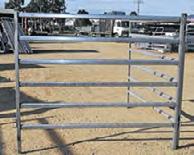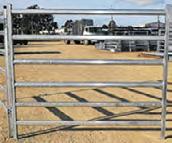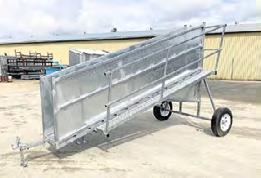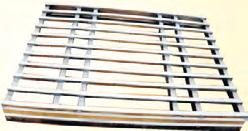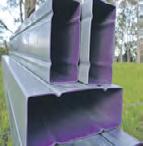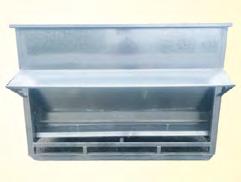






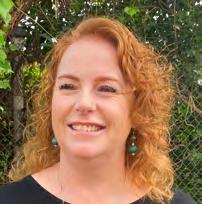





June Edition:
May 26, 2023
July Edition:

June 23, 2023
August Edition:
July 28, 2023
September Edition:


August 25, 2023
October Edition:
September 22, 2023
November Edition:
October 20, 2023
December Edition:
November 17, 2023
February Edition:

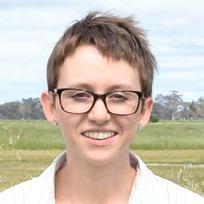
January 26, 2024
March Edition:
February 22, 2024
April Edition:
March 22, 2024
May Edition:
April 26, 2024
Adrienne Hartnett CONTRIBUTOR Leesa Muir GENERAL MANAGER & ADVERTISING Jennifer Ho TRAINEE GRAPHIC DESIGN Rebecca Flisher CREATIVE MANAGER Zoe McMaugh CONTENT MANAGER Kimberly Grabham CONTRIBUTORHannah Shea has been awarded the 2023 Australian Food and Fibre (AFF) tertiary scholarship.
The former Hay War Memorial High School student is attending Charles Sturt University where she is studying a Bachelor of Medical Radiation Science.

“I want to come back to Hay once I’m finished uni,” Hannah said. “At the moment someone flies in from South Australia once a week to take xrays.
“One day that could be me instead.
“If I can come home, or move to another country town, that means older people don’t have to travel for their scans.
“It means if someone gets hurt at footy on the weekend, I could be on call to help.”
Hannah’s parents David and Sherelle couldn’t be prouder of Hannah’s achievements and the scholarship announcement.
“We are both very proud of Hannah, and this scholarship means she can settle in and focus on her studies, and being away from home, before she starts looking for work,” explained mum Sherelle.
“It has taken away a lot of that financial anxiety,” Hannah agreed.
“I will be doing placement each year, which I cover the cost of, so this will really help, because it’s hard to work while I’m away, and I can use some of the scholarship for accommodation.”
According to the family, the scholarship will be especially helpful in Hannah’s fourth year, where she is required to undertake 32 weeks of placement, in a variety of locations.
The AFF Education Scholarship follows on from the rich heritage and long-standing community engagement of the Auscott Education Scholarship.
Since its inception in 1971, there have been 160 students whose advanced education has been supported.
“We encourage all AFF scholarship recipients to take full advantage of this opportunity and to return to their local communities to further grow the skills of our rural and regional areas,” said AFF managing director Joe Robinson.
“AFF is proud of our local communities and are pleased to support our regions and students by offering this important development programme for our local youth.”
Applicants are sought from AFF’s farming and ginning operational regions in the MacIntyre, Gwydir, Namoi, Macquarie and Murrumbidgee Valleys, and at Bourke on the

Darling River. Applicants must attend one of the local high schools within these operating regions to be eligible for the scholarship.
Lucy Beness of Moree Secondary School, Chloe George and Acacia Bell of Wee Waa Secondary School and Haleigh McCarney of Trangie Secondary School join Hannah in being announced as AFF scholarship recipients for 2023.
The scholarship assists students to meet their non-tuition costs such as accommodation, books, and other living expenses, totalling up to $11,500 per year over the life of their course of study.
“We encourage all AFF scholarship recipients to take full advantage of this opportunity and to return to their local communities to further grow the skills of our rural and regional areas.”
JOE ROBINSON

Developed by Australian Wool Innovation, the training centre and school will shore up the industry by training Australian and overseas workers.
On-site accommodation is included in the development.
It comes more than 12 months after the new shearer training facility and research centre was first proposed, which brought hope it could help ease the Australian shearer shortage.

AWI chairman Jock Laurie said in light of the workers shortage, they want to show their confidence in the shearing industry by establishing the new facility at Falkiner Memorial Field Station near Conargo.
“You’ve got to have confidence in your own industry,” he said.
“We’re prepared to continue to train, we continue to do research and continue to invest in the industry and that’s critically important.”
“I mean wool harvesting is an absolutely critical component of wool production – without that you don’t have it.”
Mr Laurie said they were originally hoping to have all the facilities ready and open this month.
After facing difficulties securing builders, he expects it now to be later this month or sometime next month.
“I’d say over the next two or three months the facility will be right, and we would ideally like to start doing some training in the facility at that stage,” he said.
“There will be a facility there that provides accommodation, meal facilities, sheds and everything.
“Obviously with the Pacific Islanders scheme, there could be some opportunities down the track to do some full on training, so that’ll be an important part.”
Mr Laurie said the training facility is expected to cater for 15 to 20 people at a time.
“It’ll be about those numbers, but it depends on what the final configuration is when they’ve done the work,” he said.
“It will also vary depending on the number of people that want to go to the schools.
“But the first thing we have to do is get the facilities up to speed, and make sure that facilities could then be utilised for training or schools or whatever we need to do.”
Mr Laurie said the purpose of the facility was not only to address the worker’s shortage but also to open the door to other opportunities which may present themselves along the way.
“We’re going to continue to train on a regular basis to make sure we’ve got a constant flow of new people coming into the industry,” he said.
“We’ve had a lot of support out of the industry itself in providing facilities to do that.
“But also there are things around the Pacific Islanders scheme, about getting people in from those countries
in numbers, and we could put those into a facility like Deniliquin and support them.
“So we’ve just got to see how those policies develop over a period of time as to what opportunities are there.”
Mr Laurie said it’s positive that some of the pressures caused by the national shearers shortage have started to ease in certain areas of the industry.
The weather “drying up” and COVID-19 restrictions lifting, which have both allowed people to travel more freely, are some of the reasons he said why those pressures have eased.
“Some areas we still have a bit of a problem. I know there’s not any doubt about that, but it’s starting to ease off in other areas.
“There’s also been a lot of training and new participants coming in, and people shearing more numbers because of the improved schools.
“So there’s been a whole range of things that have all come together to make it work fairly well and take some of the pressure off.”
Mr Laurie said AWI is also looking at potential research projects the facility can be utilised for.
“We’ve already had one field day there,” he said.
“As new technology arrives, there may well be more opportunities there too. But it’s just all in the planning at this stage and just to continue to work in this space, see where the chances arise for potential field days or training.”
In the meantime, Mr Laurie said AWI will be focused on how to best utilise the facilities for shearer training.
“We want to invest and we want to continue to train, and we want the facilities to be able to do it,” he said.
“It’s all there. Plus the obligation that we have in maintaining the facilities as well.”
Conargo will cement itself as a hub of the shearing industry in coming months, with the pending launch of a dedicated shearing school.
“We’re going to continue to train on a regular basis to make sure we’ve got a constant flow of new people coming into the industry.”
JOCK LAURIE


Research by the CSIRO has found that demand for agritourism is expected to reach $18.6 billion by 2030, at around a five per cent per annum growth.

Adding expenditure for food, drinks and accommodation, the annual opportunity is expected to reach $5.6 billion by 2030.
This would include $3.6 billion spent by international visitors and $1.9 billion spent by domestic visitors.
Based on this analysis, the CSIRO says agritourism will be an important growth industry for Australia’s regional and rural economy over the next decade.
District opportunities in agritourism will be explored in more detail through the Destination Riverina Murray Agritourism Strategy.
Being developed now, it is intended to guide and stimulate development, providing significant opportunities for farmers, tourism operators, and the wider community to capitalise on the Riverina Murray’s unique combination of agricultural and tourism assets, including its wine, food, fibre, and natural attractions.
Destination Riverina Murray says very few dedicated agritourism strategies have been developed in Australia, and this would be the first of its kind for this region.
The strategy will be developed in consultation with stakeholders, with a series of meetings held across May.
“The success of this Agritourism Strategy relies heavily on the involvement of local communities and industry stakeholders in the Riverina Murray region,” the organisation said.
“Open to members of the public, these in-person workshops aim to gather in-region input and feedback from community, agriculture and tourism representatives - to ensure this Agritourism Strategy aligns with your needs and aspirations.”
Agricultural operators are also currently being engaged through interviews, workshops and site visits.
The visitor markets will be engaged through market testing of potential product development and marketing initiatives.
The final Agritourism Strategy is then expected to be published late August 2023.
Workshops begin in Mildura on May 8, and will be followed by meetings at Barham on May 10, Albury on May 11, Tumbarumba on May 12, Wagga on May 16, Griffith on May 18 and Temora on May 19.
A detailed situation analysis report (SAR) has been developed ahead of the consultation sessions, which provides more information behind this strategy development.
Go to www.riverinamurray.com.au to learn more, register for a workshop or access the SAR.

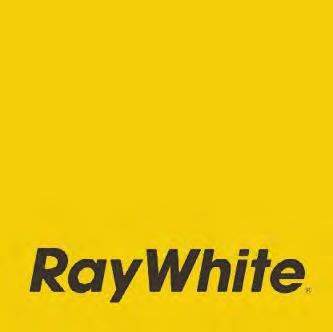


I am humbled by the response the community demonstrated in reelecting me to be your representative in Macquarie street.


I would like to convey a huge thank you the constituents of Murray and guarantee that I will pursue the issues that are in our best interests.
Our health, education and the health of our resources are topics I am passionate about.
The concerns we share about the management and use of our rivers and lakes are other issues I have brought to the attention of newly appointed ministers the past few weeks.
I have received a strong commitment from the new government to also address the problems we face in our education models, standards and needs.
I am committed to each and every person in this electorate regardless of how you voted.
I think we all share the same vision for the future and the task has already started.
Helen Dalton MP for Murray
Do you feed treats to your pets?
It’s not unusual for pet dogs to be given scraps as treats. They often beg at mealtime and will con you out a bit of what is on your plate.
But what if your pet is a pig? What are you feeding them? Did you know that it is illegal to feed some things to pigs?
This is because of the potential disease risks, to both your pet pig and other animals. Known as prohibited pig feed (and traditionally referred to as swill) items such as pies, sausage rolls, deli meats, bacon and cheese rolls and tables scraps which contain or have been in contact with meat must not be fed to pigs.
Pigs are very susceptible to picking up some disease, like exotic diseases foot and mouth disease (FMD) and African swine fever (ASF), from eating contaminated meat. If they become infected with FMD pigs amplify infection by producing thousands of virus particles. These virus particles can then go on to infect other nearby cloven hooved animals such as cattle, sheep, goats and deer.

So, what should you be feeding your pet pig?
You are allowed to feed your pig commercial pig food, grain, vegetables, fruit, milk or milk products that are of Australian origin (or legally imported into Australia for stock feed use), eggs and non-meat bakery foods such as bread (as long as it hasn’t been in contact with meat).


Next time you want to give your pet pig a special treat remember to stay away from meat.
If you would like more information on what you can and can’t feed your pig you can:
• Scan the QR code and watch our video: Search Youtube for MLLS little piggies – the real story.
• Scan the QR code to visit our website: Search for LLS what can I feed my pigs?
Or contact your local district vet or biosecurity officer.

”With



Hay Working Dog Club held a well-supported round of trials over the Easter long-weekend.

The iconic Shear Outback, Australian Shearer’s Hall of Fame provided an ideal backdrop to the 12th annual event, which attracted enthusiasts from across the region.

Affiliated with NSW Yard Dog Association, the event offered cash and prizes across the open, improver, novice and beginner competition categories, and a total of 112 entries were received.
Dean Incher and Raffa took out top honours once again, repeating their championship efforts in 2019 and 2022, but the contest was tough; Incher and Raffa beat out local Hay trainer Geoff McDougall and Ace by a single point in a run off.
McDougall’s dogs took out podium finishes in three of the four competition categories.
Judges Chris Sellars and Warwick Doolan were kept on their toes with the high level of entries and quality displays by the dogs and their handlers.
OPEN
1st - Dean Incher & Raffa - 282
2nd - Geoff McDougall & Ace - 281 (fastest time 5 minutes, 19seconds)
3rd - Keilan Bamford & Collin - 188
4th - Keilan Bamford & Duke - 183
5th - Dale Thompson & Jake - 182
IMPROVER
1st - Marc Braybon & Walker - 92
2nd - Ed McFarland & Smudge - 86
3rd - Geoff McDougall & Champ - 82
Fastest time - Herb Cooper & Noah – (fastest time 5 minutes, 48 seconds
NOVICE
1st - Geoff McDougall & Jaffa - 190
2nd - Neville Williams & Yanto - 186
3rd - Geoff McDougall & Nugget - 184 (fastest time 3 minutes, 50 seconds)
4th - Shane Maurer & Keeper - 183
5th - Casey Hayes & Boon - 178
BEGINNER
1st - Peter Fisk & Spider - 87 (fastest time 4 minutes 30 seconds)
2nd - Dwayne Evans & Kenny - 85
3rd - Brad Gavenlock & Logan – 84
The club holds regular training days for those interested in learning more, with details posted on their Facebook page.
Geoff McDougall and Nugget competing in the Novice final, in which they placed third with the fastest time.



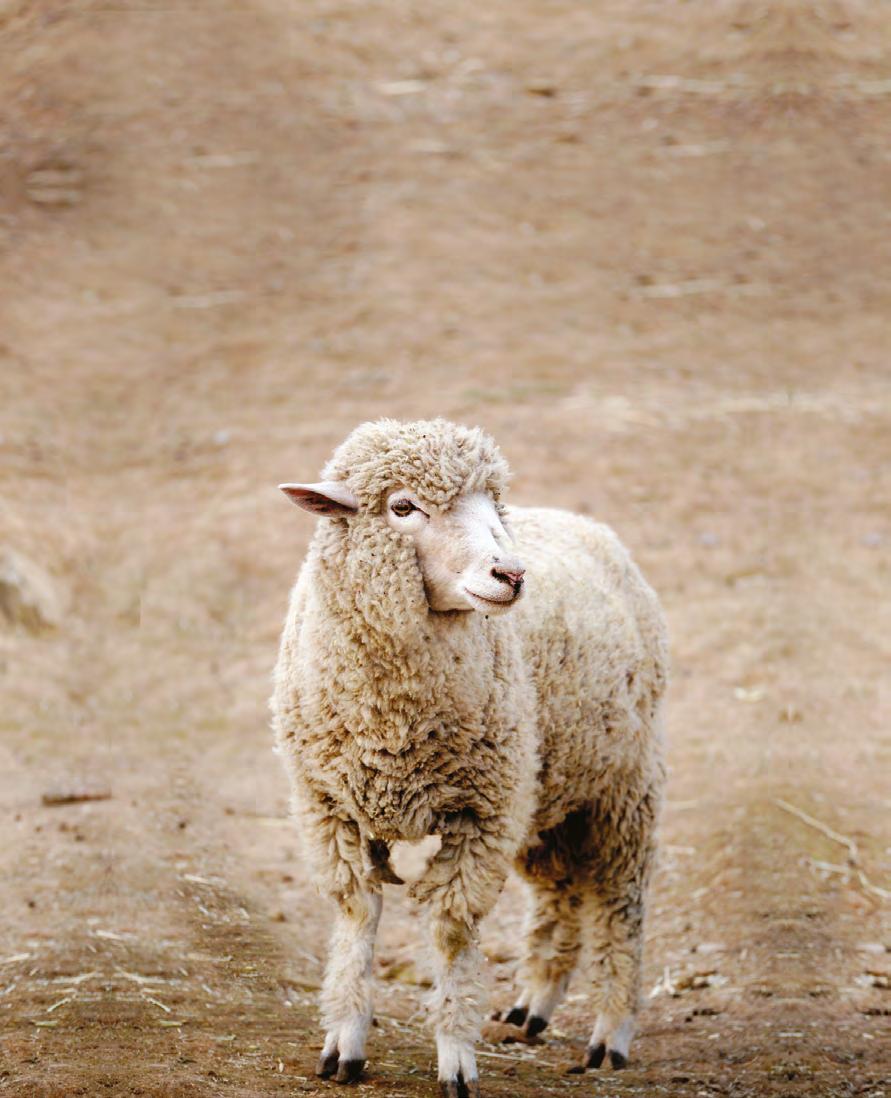




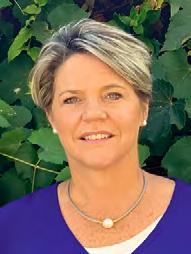


Coming into the cooler months and shorter day lengths, pasture and legume growth will slow. Local Land Services encourages farmers to consider what the ‘stock feed gap’ might look like this year, and what steps you can take to minimise the issues arising from this.
Astock feed gap typically occurs when feed quality (pasture, grain, supplementary etc), does not meet the energy requirements of livestock. If not identified and addressed early, stock may start to decline in condition and production losses may be seen.

Firstly, consider how many animals you have on your farm and classes of stock:
• Ewes and lambs
• Pregnant ewes
• Weaner sheep
• Breeder Cows
• Young cattle
Next, what feed do you have on hand?
• Estimate of kilograms dry matter per hectare available
• Pasture/ legumes varieties and their nutritional quality
• Hay on hand- quantity, quality and type (eg: #’s rounds, small squares etc; old, lesser quality or fresh cut, high protein, well stored, grass, straw, lucerne, other mixed variety).
• Grain available (quality, quantity)
With widespread flooding throughout 2022, there may be a shortage of hay, silage and potentially feed grain throughout the region. If you haven’t got feed on hand, it could be difficult to obtain, of a reduced quality or higher in cost.
How will this impact your business? Are you prepared to pay a premium for hay, seek agistment elsewhere or are you better positioned to sell some stock if possible and reduce mouths requiring feeding. This is a decision only you can make, based off an analysis of feed on hand and your business needs.
You may also be able to consider sowing grazing cereals or other species to help fill the feed gap. Keeping in mind that this won’t provide an instant feed source until there is sufficient growth and ongoing management is required to ensure stock condition and their nutritional requirements are met, as well as managing grazing to ensure suitable recovery and ongoing regrowth of crops for further grazing or harvest.
To address the feed gap and closely analyse how much feed you will require, you can do a feed budget. The information listed above will assist you to assess this and you need to be honest with yourself about what you have access to. Online tools are available to assist with conducting a feed budget and assessing estimated feed costs including; MLA Feed calculators & Pasture Tools, NSW DPI Feed cost calculator https://www.mla.com.au/ extension-training-and-tools/tools-calculators/
For further discussion contact Rebecca Stacey, Local Land Services 0436 342 086 or your Local Land Services district office.






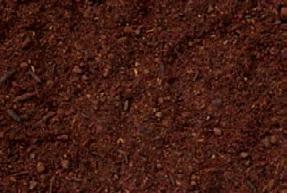
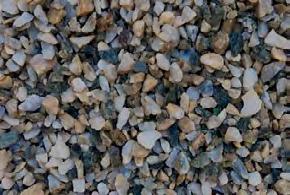


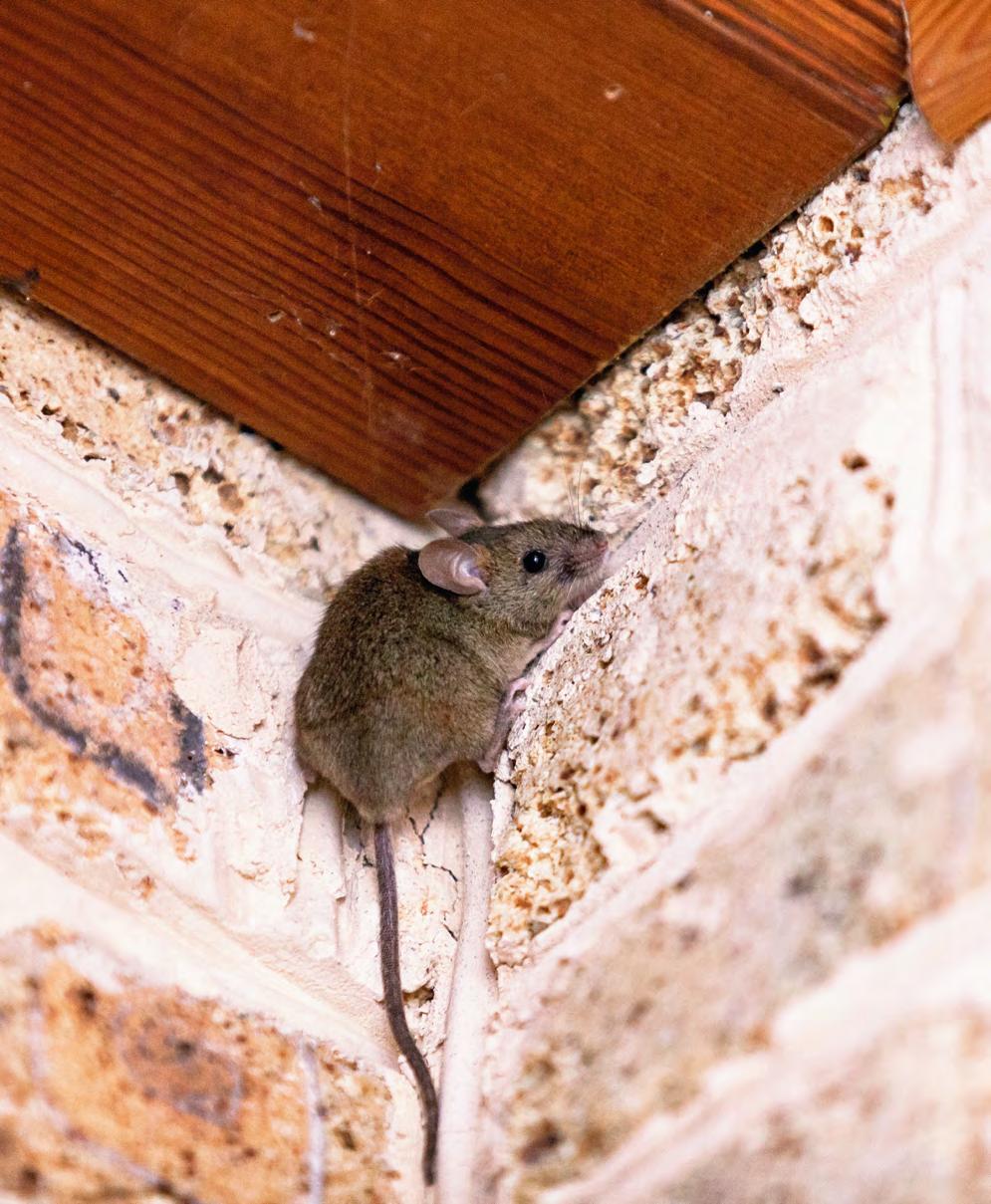
Speaking at the meeting of the National Mouse Group in late March, experts from Australia’s national science agency, CSIRO, warned that while mouse numbers vary across cropping zones, if present in high numbers, they can have devastating impacts on crops being sown.
Grain growers are being urged to check their paddocks for signs of mouse activity as reports of infestations emerge, with last season’s wet, late harvest leaving lots of grain on the ground in many areas.
Speaking at the meeting of the National Mouse Group on March 31, experts from Australia’s national science agency, CSIRO, warned that while mouse numbers vary across cropping zones, if present in high numbers, they can have devastating impacts on crops being sown.
If left unchecked, a mouse population can quickly escalate and result in crop losses, reduced yields, and increased costs associated with pest control measures.
In addition to eating crops, mice can also damage infrastructure such as irrigation systems and farm buildings.
“Mice are everywhere but numbers are patchy, so farmers should focus on paddocks that have sustained pre or post-harvest grain loss. It’s about looking earlier and ordering bait as soon as you can,” Mr Henry said.
NSW Farmers President Xavier Martin is also urging growers to be extra-vigilant about mouse activity, and to use chew cards to gauge numbers.
“Members are telling me they’re seeing mice again, all the way from Queensland down to the Victorian border and out west towards Adelaide,” Mr Martin said.
“We need everyone to keep an eye out for mice, in particular using their chew cards, and report any activity to authorities.
“It’s important to stay on top of this issue so we can avoid a repeat of the 2021 mouse plague.
“So please if you see something, say something.”
In 2021 the rodents swarmed rural and regional communities, chewing their way through hundreds of millions of dollars’ worth of crops, damaging farm machinery, vehicles and buildings in the process. People reported being “sickened” by the sight of ‘carpets’ of mice on our highways.
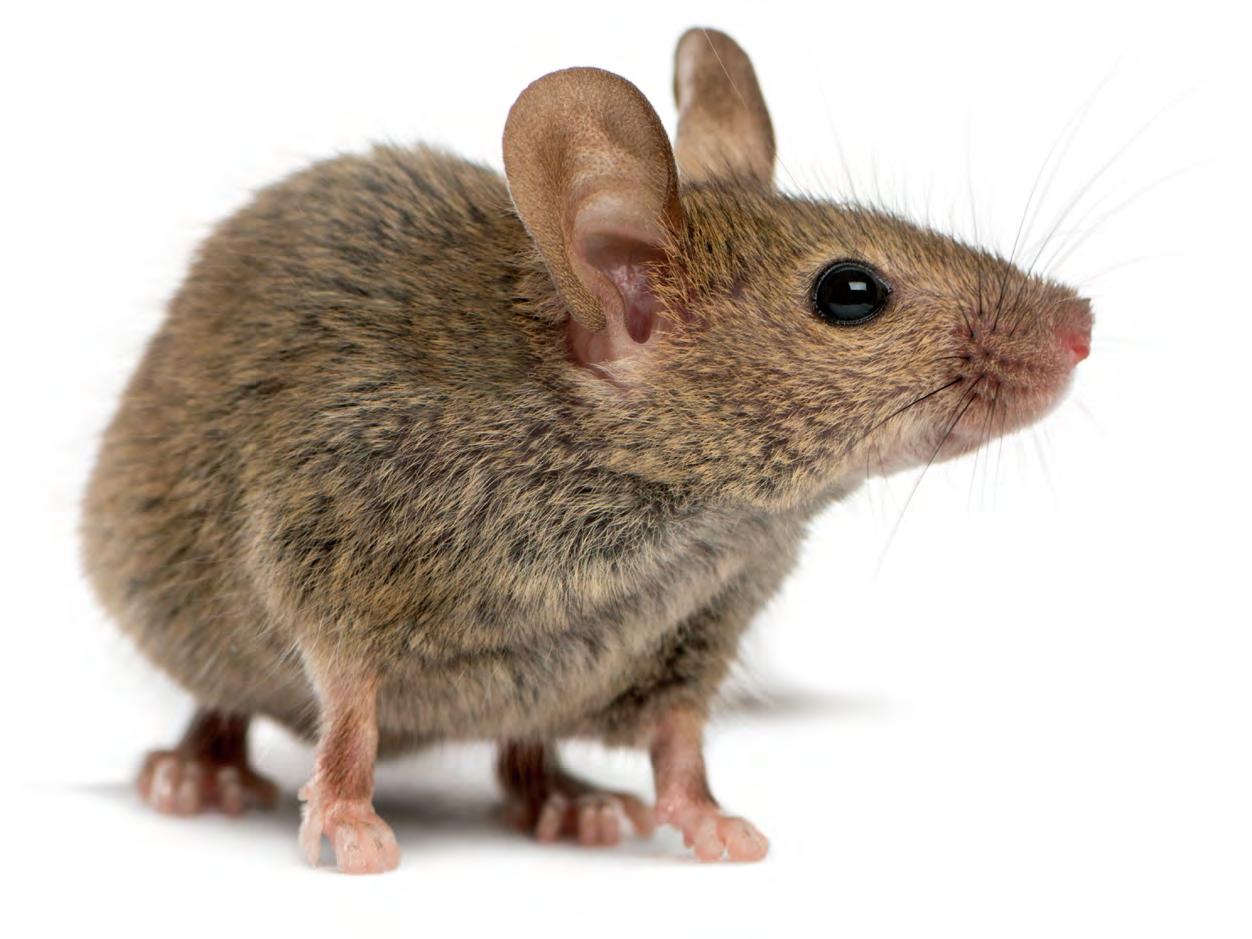
If mouse numbers on farms are high, experts advise growers to apply control measures when background food is at its lowest, which is just after planting, to give mice the best chance of finding and eating the bait.
GRDC and CSIRO recommend the application of 50g/kg zinc phosphide baits (ZnP50) to ensure that each bait grain is a lethal dose.
Zinc phosphide is the only rodenticide active ingredient registered for use in broadacre cropping in Australia.
“Our research shows it takes 2mg of ZnP to kill a 15g mouse. The new ZnP50 product ensures that a mouse only needs to fully consume a single treated grain to receive a lethal dose,” Mr Henry said.
“This avoids the problem of mice becoming bait averse.”
Growers can find information on ZnP50 in the APMVA permit and access online stewardship training and reporting programs from Grain Producers Australia.
These have been introduced to support best practice application of ZP50 mouse bait products.
In addition to completing the stewardship training, Mr Henry advises growers to speak with bait manufacturers and resellers early, as bait supplies may become short
if demand is high once sowing commences and mice become more apparent in paddocks.
GRDC pests manager Dr Leigh Nelson said growers should also talk to their resellers and manufacturers if they have any issues with baits.
“We encourage growers to monitor mouse numbers pre and post-baiting, to determine bait take up and evaluate the outcomes of their baiting program,” Dr Nelson said.
“Growers should consult their supplier if they are concerned about any apparent lack of control to discuss ways to potentially improve their baiting outcomes.”
Farmers and rural landholders are urged to report mouse activity by visiting feralscan.org.au/mousealert

You can download the chew card template at https:// grdc.com.au/resources-and-publications/resources/ mouse-management/monitor-manage/know-yourmouse-numbers.
For additional mouse resources visit the GRDC and CSIRO websites.
Grain growers are being urged to check their paddocks for signs of mouse activity as reports of infestations emerge, with last season’s wet, late harvest leaving lots of grain on the ground in many areas.


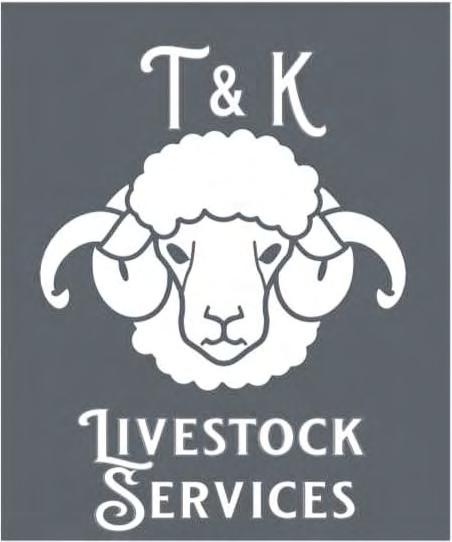






Following a
MrGordon announced his intention to retire in December 2022 and will step down on August 23 this year, at the conclusion of the company’s AGM.
Mr Serra will join SunRice in early July to allow for an orderly leadership transition.
He joins SunRice from the role of managing director North America (USA and Canada) with Olam Food Ingredients (ofi) in New York.
Prior to joining ofi, Mr Serra held a number of senior executive roles at the Campbells Soup Company, and was previously in operational roles at Arnotts Biscuits ANZ.

Mr Serra has demonstrable experience in delivering financial outcomes in the agribusiness, food ingredients and FMCG sectors and brings to the SunRice role an in-depth experience in supply chain, people leadership, business transformations, health and safety and operations.
He holds an honours degree in engineering from The University of Queensland.
“It is a great honour and privilege to be appointed as the CEO and managing director of SunRice, a leading
global food group and one of Australia’s leading branded food exporters, at such an important time in the group’s evolution as it continues its expansion both in Australia and overseas,” Mr Serra said.
“I look forward to continuing to build on the underlying strength of the SunRice business and delivering a strategy to create long term value for the group, in partnership with SunRice’s growers, shareholders, customers, communities and its people.”
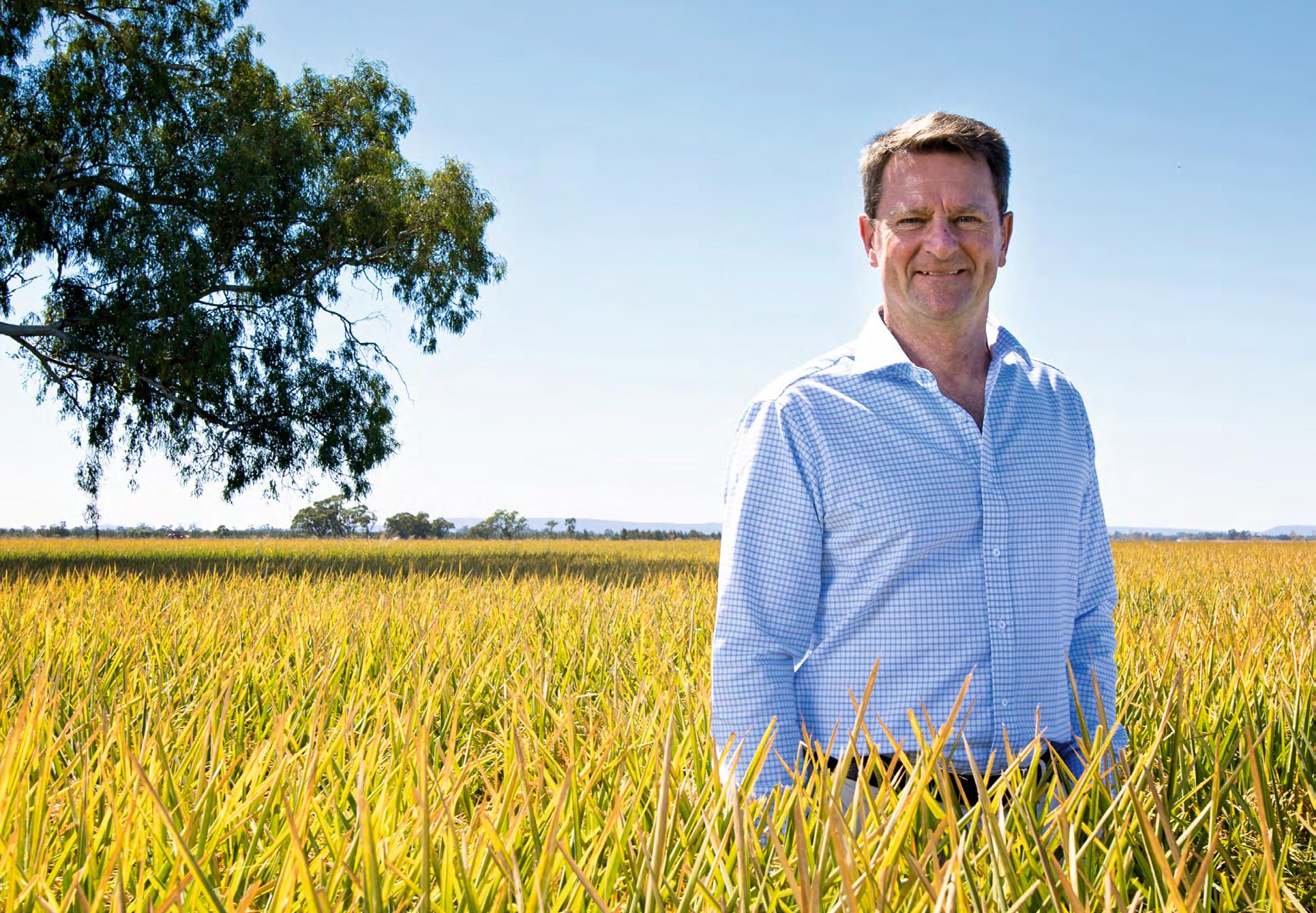
SunRice chair Laurie Arthur described Mr Serra as an “accomplished executive”.
He said his leadership skills and global experience in the growth and transformation of complex and diverse organisations will “provide the right mix to continue to build on the SunRice Group’s growth strategy”.
“The board is confident that under Paul’s leadership SunRice will be well positioned to build on our core strengths and continue to create value for both classes of shareholders.
“Paul’s appointment reflects his deep commercial and operational experience, leadership capabilities and track record at both ofi and Campbell Soups.”
comprehensive global search process, the board of Ricegrowers Limited (SunRice) has announced that Paul Serra will succeed Rob Gordon as CEO and managing director of the SunRice Group.Paul Serra will succeed Rob Gordon.













SAM VINCENT
A moving and hilarious fish-out-of-water memoir of a millennial leaving his inner-city life to take over the family farm. Sam Vincent is a twenty-something writer in the inner suburbs, scrabbling to make ends meet, when he gets a call from his mother- his father has stuck his hand in a woodchipper, but ‘not to worry - it wasn’t like that scene in Fargo or anything’. When Sam returns to the family farm to help out, his life takes a new and unexpected direction. Whether castrating a calf or buying a bull - or knocking in a hundred fence posts by hand when his dad hides the post-driver - Sam’s farming apprenticeship is an education in grit and shit. But there are victories, too- nurturing a fig orchard to bloom; learning to read the land; joining forces with Indigenous elders to protect a special site. Slowly, Sam finds himself thinking differently about the farm, about his father and about his relationship with both. By turns affecting, hilarious and utterly surprising, this memoir melds humour and fierce honesty in an unsentimental love letter. It’s about belonging, humility and regeneration - of land, family and culture. What passes from father to son on this unruly patch of earth is more than a livelihood; it is a legacy.
$32.99
STEPHANIE TRETHEWEY
Behind the scenes on our farms and outback stations are incredible women whose stories reveal strength, vision and love, no matter the challenge they’ve overcome. Stephanie Trethewey’s Motherland gives a voice to the extraordinary lives of fourteen rural mothers across states, territories, culturesand generations. Each women offers an unfiltered insight into the tragedies and triumphs that have shaped their lives on the land, with motherhood being their most challenging role of all.

$34.99
MINNIE
MARIANNE VAN VELZEN
People always asked her if she was ever afraid living out in the desert alone with all those rough and scruffy men, but Minnie Berrington was not the faint-hearted type and never had been. Being tough came naturally to her, growing up with three brothers and a family that went from riches to ruins. Only a slip of a girl,Minnie could match any man in stamina,perseverance and strenght. She arrived in Coober Pedy when essential supplies still arrived by camel, and water was so scarce no-one washed. Together with the other miners, she braved the heat, the flies and the dust. Every day she waited for that special sound the pick made when it cracked opal. The first women to dig her own shafts in the Austrailian opal fields, Minnie began her working life as a typist in London. She and her younger brother Victor sought freedom and adventure in the 1920s and found plenty of it in the outback.
$32.99

People always asked her if she was ever afraid living out in the desert alone with all those rough and scruffy men, but Minnie Berrington was not the faint-hearted type and never had been. Being tough came naturally to her, growing up with three brothers and a family that went from riches to ruins. Only a slip of a girl,Minnie could match any man in stamina,perseverance and strenght. She arrived in Coober Pedy when essential supplies still arrived by camel, and water was so scarce no-one washed. Together with the other miners, she braved the heat, the flies and the dust. Every day she waited for that special sound the pick made when it cracked opal. The first women to dig her own shafts in the Austrailian opal fields, Minnie began her working life as a typist in London. She and her younger brother Victor sought freedom and adventure in the 1920s and found plenty of it in the outback.

$29.99
great
Phone 5881 2080. www.deni.com.au

Many elements and considerations go into running a farming business successfully. There are considerations of what farming enterprises you have, how to manage this farming business and, how to fund and manage the farming operations that make up a profitable and productive farming business.
Balancing the time and capital allocation, managing day to day operations and the decision making around inputs, farm limitations, grazing enterprises and animal nutrition if you have livestock, can be challenging.
Murray LLS Sustainable Agriculture team is running a series of free workshops across the region with technical experts to speak on soils, grazing and farm business management to help you make informed decisions. Running through May and June in various locations from Tumbarumba to Koraleigh, there will be thirteen workshops in total.
Join us for a workshop with Paul Blackshaw to learn more about Farm Business Management; Sue Briggs and others speaking about Soil Health and Pasture Species Selection; and Jim Shovelton or Phil Graham speaking about Grazing Management and Animal Nutrition.
To register or for more information scan the QR code to go to the Murray LLS Events webpage https://www.lls.nsw.gov.au/regions/murray/events/m-events/getting-back-to-basics-workshopssoils,-pastures,-and-farm-business-management or contact Rebecca Stacey on 0436 342 086.

FARMtalk welcomes community contributions from farmers, experts and professionals who make their living and life on the land. If you would like to contribute, there are several ways to do so.
• Get in touch and give us a tip of a great story idea.
• Contribute an article: If you are an expert in your field then contributing once off, or regularly, is a great way to get started in our FARMtalk magazine. Contact Zoe McMaugh at farmtalk@denipt.com.au or 03 5881 2322.
• Become an author: FARMtalk is open to occasional contributors who are experts in their field or authorities on a subject or area. Once you have contributed an article, and the editorial team have approved you, we can set you up with a regular column to contribute. We would love to hear from you. Contact Zoe McMaugh at farmtalk@denipt.com.au or 03 5881 2322.










